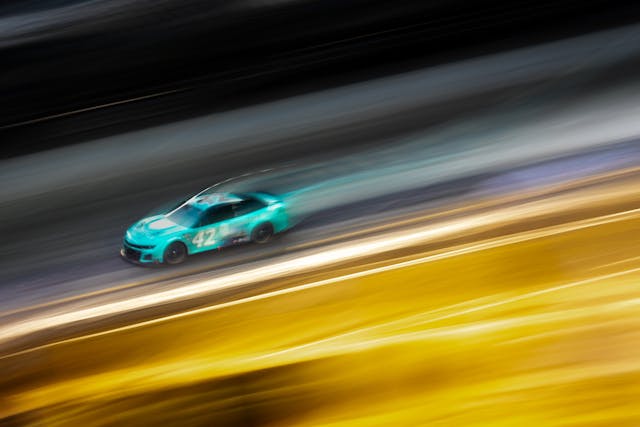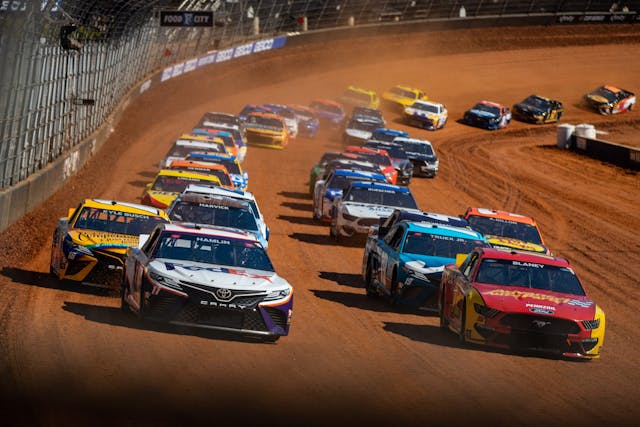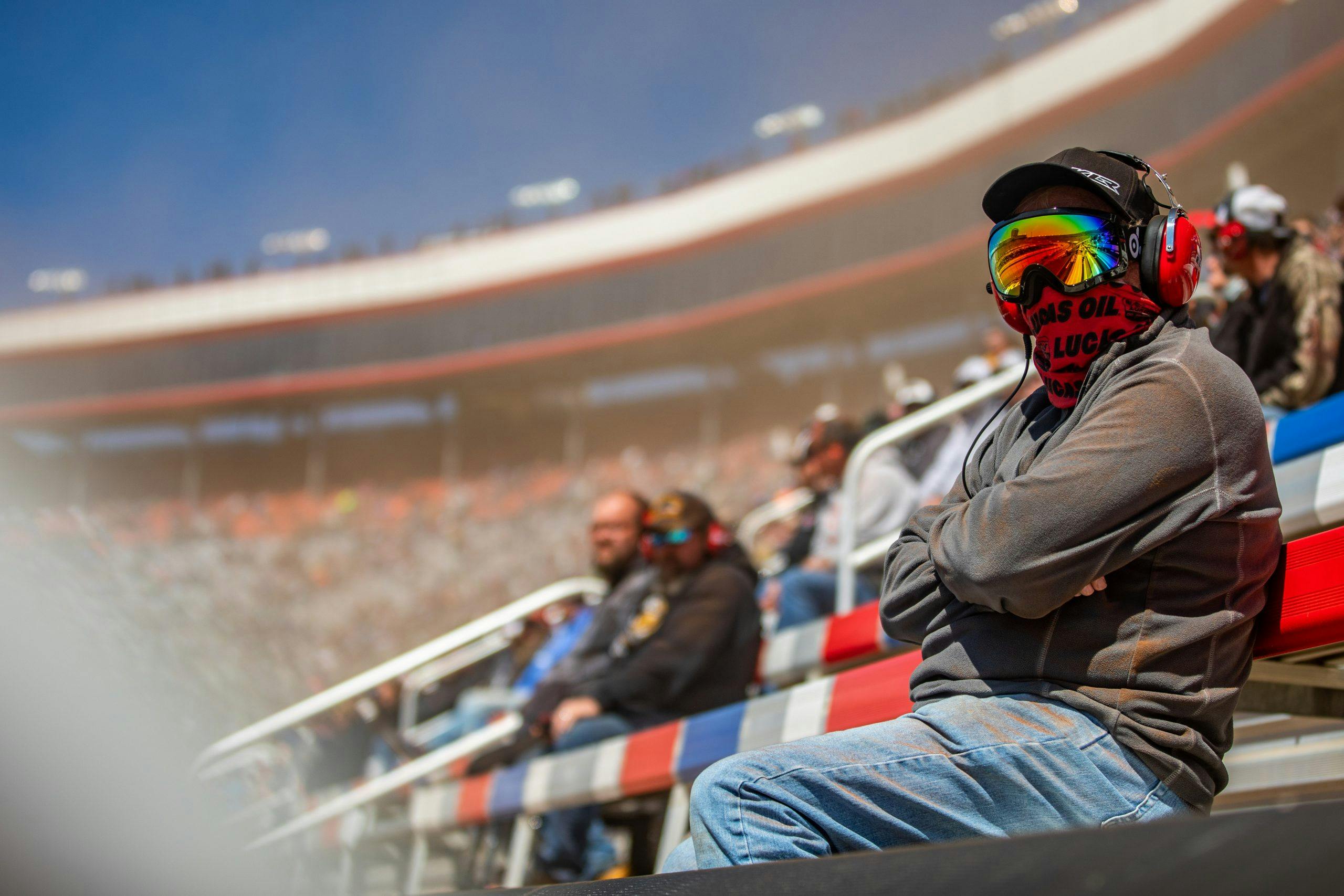Nothing is sacred in NASCAR, including Bristol dirt
Five months after the sole dirt race on NASCAR’s schedule, the nooks and crannies of Bristol Motor Speedway’s towering aluminum grandstands are still filled with orange Tennessee clay. The remaining residue, which closely resembles Cheetos dust, is a reminder of the transformation that the track has undergone each spring since 2021. For fans of the series, the dirt is also a reminder that, next year, things will change at Bristol.

Three years ago, NASCAR made its highly anticipated return to dirt, the first time the Cup Series had competed on the surface in 50 years. Rather than use one of America’s numerous clay ovals, NASCAR and Bristol opted to cover the beloved half-mile in Bristol, Tennessee, with 2300 truckloads of the orange stuff.
Ahead of this year’s fall date, NASCAR announced that Bristol’s spring race would no longer be a dirt-caked contest and that the track would utilize the original concrete for its two NASCAR weekends.

Even to the astute NASCAR fanatic, this announcement may have gotten lost in the post-season playoff hype. The Cup Series, after all, is only seven races away from deciding its 2023 champion. Bristol, though, has always been a barometer for the overall health of NASCAR.
Since NASCAR’s first race at the track in 1961, the half-mile paved oval in the Appalachian foothills of Tennessee has grown from a backwoods bull ring to a coliseum replete with eight-story grandstands, corporate suites, and Colossus, the world’s largest center-hung jumbotron. By 2002, capacity had risen from its original 18,000 seats to 160,000, and fans flocked there to watch the best 500-lap battle on the circuit. Like NASCAR, Bristol was riding a high.

In the late aughts, when NASCAR’s popularity was decreasing and attendance was in a tailspin, Bristol suffered too. The track’s 55-race sellout streak came to a screeching halt in 2010, and for the first time since anyone could remember, Bristol had to advertise in order to sell tickets.
Bruton Smith, whose Speedway Motorsports, Inc. (SMI) purchased the track in 1996 and more than doubled seating capacity, experimented with track configurations, promotions, and additional events to pique interest. In 2012, the track was resurfaced to bring back close-quarter racing. In 2016, the Bristol infield hosted a college football game.
The Cup Series dirt race was another in a long line of experiments. After the first attempt to hold it, in 2021, was plagued by weather, the following two years produced action-packed racing. Still, despite the dramatics, Bristol couldn’t fill every seat.
Looking back, a full house might not have been the end game. During that three-year stretch, especially the maiden race, the dirt date was all anyone could talk about. Fans jarred and sold the dirt that accumulated outside of the track. Even if Bristol hadn’t officially sold out, it had regained the hype.
Now, after three attempts, NASCAR is abandoning the messiest race on the calendar. But deserting the dirt is not an indication that the health of the series is failing—in fact, the decision signals the opposite. (The series has experienced some high points in viewership; After NBC’s first two races of the season, which included the Chicago street course, they reported the best start in ratings since 2017.)
Leaving this novel race in the dust proves that NASCAR refuses to be complacent. For years, the sanctioning body’s top brass seemed content to collect dollars while their grandstands hemorrhaged fans. Led by president Steve Phelps, the new guard of NASCAR is capable of pivoting quicker than an all-star point guard.
New venues are commonplace. Last weekend, another experiment was confirmed as a success: The LA Coliseum would once again hold an exhibition race in 2024. And the Cup Series’ radical new car is hitting its stride in its sophomore season, drawing the eye of international drivers like Shane Van Gisbergen, Kimi Räikkönen, and Kamui Kobayashi. Stock car stock is high. Why?

For years, tradition was a fundamental part of NASCAR. This was a flaw, not a virtue: Commitment to convention left the series flat-footed when times changed. When it started to experiment with 2008’s Car of Tomorrow, stage breaks, and points formats, there was immense backlash.
Now, rather than exclusively emulating the past, NASCAR is maintaining both sides of the house while embracing trial and error. New races can be short-lived. Ideas like rain tires on ovals, large spoilers on decklids, and two races in one day can be tested and abandoned in a year’s time. Don’t like something in NASCAR? Stick around, and it might change.
And if you want another dirt race, one thing’s for certain: You won’t have to wait another 50 years.

***
Check out the Hagerty Media homepage so you don’t miss a single story, or better yet, bookmark it. To get our best stories delivered right to your inbox, subscribe to our newsletters.





Dirt road course ala Hazzard County is the way to go…
La is a joke. The Chicago race was a waste. Not even full length. Horrible to attend.
You want dirt go to Eldora.
Mid Ohio would be of more interest as the infinity cars put on sone great races there.
Thank God the Bristol dirt race is over, now if we can just get rid of the ridiculous crash at the coliseum
Bristol dirt was a great idea, which was a total flop in its execution.
Indeed, go ask Tony to host a dirty race at Eldora, not at Bristol
Chicago had all the earmarks of a bust, and in spite of the torrential rains was pretty darn good.
LA Coliseum? Might as well stage the next “special” event in a Kroger parking lot.
All in all, NASCAR is trying, in fact trying real hard.
Breaking away from the hide-bound tradition is a great first start.
Dick, I disagree sir.
“Breaking away from the hide-bound tradition is a great first start.”
I’m afraid that was one of the many things contributing to NASCAR’s decline.
As has been indicated by other comments, NASCAR didn’t really need a dirt race. There are plenty of dirt tracks all over America (and a bunch in Mexico – ask Daniel Suarez who is a product of them) with exciting (and traditional) stock car racing. In fact, a number of NASCAR drivers can be found at some of these tracks between NASCAR events.
I trashed the Chicago Street Race and then decided it was a great event, particularly since Shane Van Gisbergen, an “outsider” (but tremendous race car driver) won it in his first NASCAR event.
NASCAR has come back and I believe it is because they are trying some different things than going around and around. And the new car has truly leveled the playing field so it’s not always the same two or three (or four or five) drivers leading and winning races.
Not surprising to see the dirt race go away. I don’t think the public cares too much.
If the world of outlaws and any top flight sprint car or midget car racing was televised, nobody would ever watch NASCAR again as it is so boring by comparison and the made up stage racing, points racing, etc. tries to keep it competitive. Why do you think the best drivers in NASCAR are from the dirt tracks… Another question I have, what is NASCAR going to do to modify their rules once all of the manufacturers go EV?? and no ICE cars are produced??
Level playing field cars have ruined the sport. It’s auto racing..not driver racing. Best car wins not the driver. That’s why car guys have gone away.
Under the vinyl covers only the engines differ. Too many cautions for too long. Breaking the race up into stages with cautions is dumb. Might as well have 3 short races in a day instead of wasting racing laps on frivolous cautions. Having “franchises” means fewer cars on the grid and fewer drivers to race each other. I am happy to see them race at Watkins Glen and Sonoma, real road courses and not those oval flat pretend courses. Too bad. Who needs playoffs when racing is the driver who ins the most or accrues the most points over a season. Its not the NFL, NBA, NHL or MLB.
Radical idea for NASCAR to try next: expand their acronym and read the meaning of the S and C. Now, I recognize that true stock car racing for NASCAR can never truly come back, but please, have 1-3 special events annually in which the teams field an actual, race-prepped, production car for the fun of it. Sure, it may not be as fast as the “couldn’t be further from stock” cars they normally race, but dang it would be fun. Picture a field of top-spec, off-the-lot (with safety upgrades) Mustangs, Corvettes, Camaros, Nissan Zs, Supras, Hellcats, M3s, Lambo’s, you name it. To keep it interesting, speed limit the cars to something like 125mph and shoe them with the same tires, which would allow the differences in cars’ acceleration, handling, AWD vs RWD, etc. to shine within that speed cap.